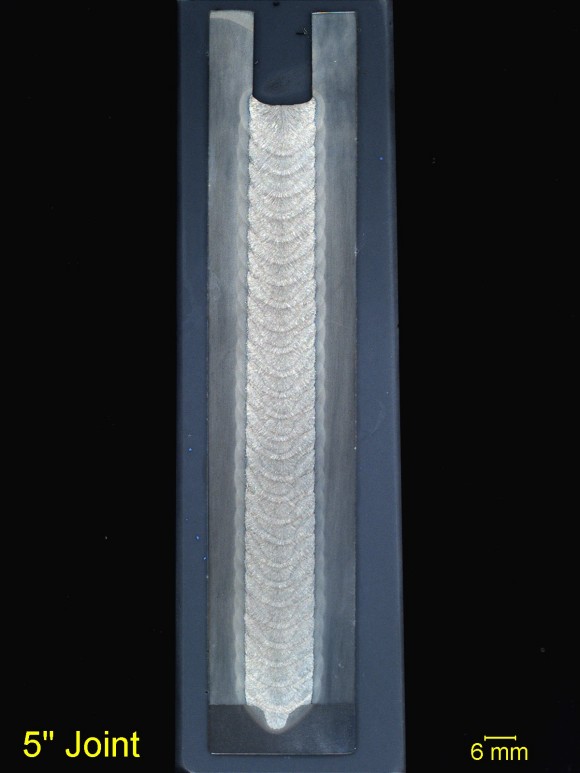

Some combos just don’t work: texting and roller-skating, toaster pastries and hot sauce, or a $300 bottle of Chianti and orange soda. In these cases, the whole is clearly less than the sum of its parts. But, sometimes we find a combination that works so well, it seems as if it was meant to be. Peanut butter and chocolate, corned beef and sauerkraut, or…GMAW and GMAW (aka tandem GMAW). Here at EWI we’re big fans of trying out new things and determining whether a mutually-beneficial relationship can be forged between two never-before-combined processes. While we certainly didn’t invent tandem GMAW, we’ve done a lot of it, and have pushed the boundaries to find out just how much greater this “whole” can be.
A bit of history…

Early 1950s-era twin-arc GMAW processes utilized a single power source with a common-potential contact tip. This configuration resulted in an unstable process with significant arc interaction, excessive spatter, and poor overall weld quality. The introduction of an additional power source did little to remedy these issues, as a common-potential contact tip was still used. Typically operated in simultaneous pulse mode, arc interference limited performance, with controlled metal transfer typically occurring only in high current ranges. In both cases, whether the “whole” was actually greater was up for debate, as quality suffered significantly in an effort to increase productivity.
When electrically-isolated contact tips were introduced to the process everything changed. By using two independent power sources, the individual arcs could be adjusted independently and operated in “synchronized” pulsed mode, with the two waveforms 180 degrees out of phase. This phase shift ensured that when the current of one arc was at its peak, the other was at its lowest level, significantly minimizing arc interference and drastically improving overall process stability.
OK, OK…so what’s the “whole” already?!

Two main things can happen when you use tandem GMAW. Compared to single-wire GMAW, you can put down more metal, and you can go fast. When you combine these benefits, you can increase productivity while welding at a calculated heat input equal to or less than what is achievable with single-wire GMAW. We’ve gone pretty nuts with this process here at EWI and have developed it for applications across many industries. We’ve welded sheet metal at 180 inches a minute, welded thick plate at 35 lbs/hour, tripled single-wire deposition rates in the horizontal and overhead positions, and built our own narrow-groove tandem GMAW torch to weld a 4.75-inch thick narrow-groove joint in 27 just passes.
Bottom line: At EWI we rock at a lot of things. One of those things is tandem GMAW. We know how to squeeze every last bit of productivity out of this process and can help you do the same. If you’re ready for some Tandemonium, let us know.